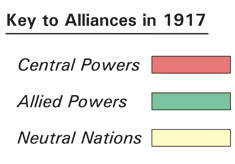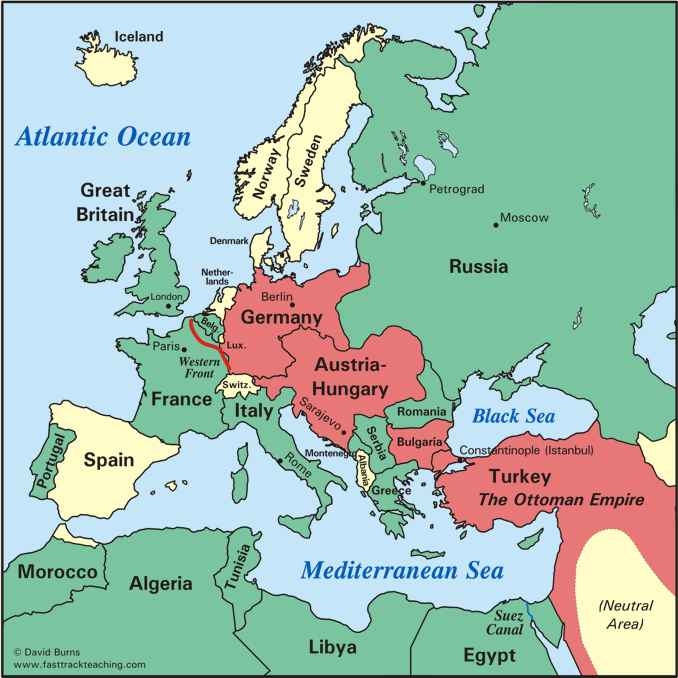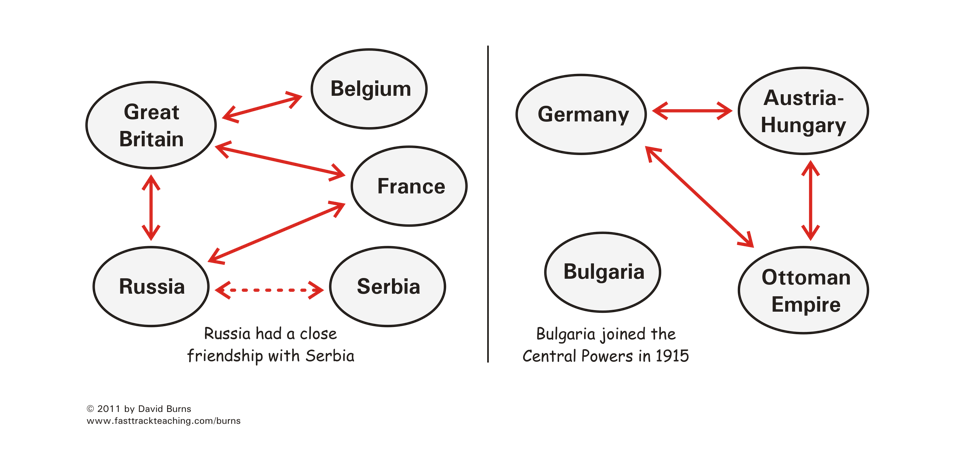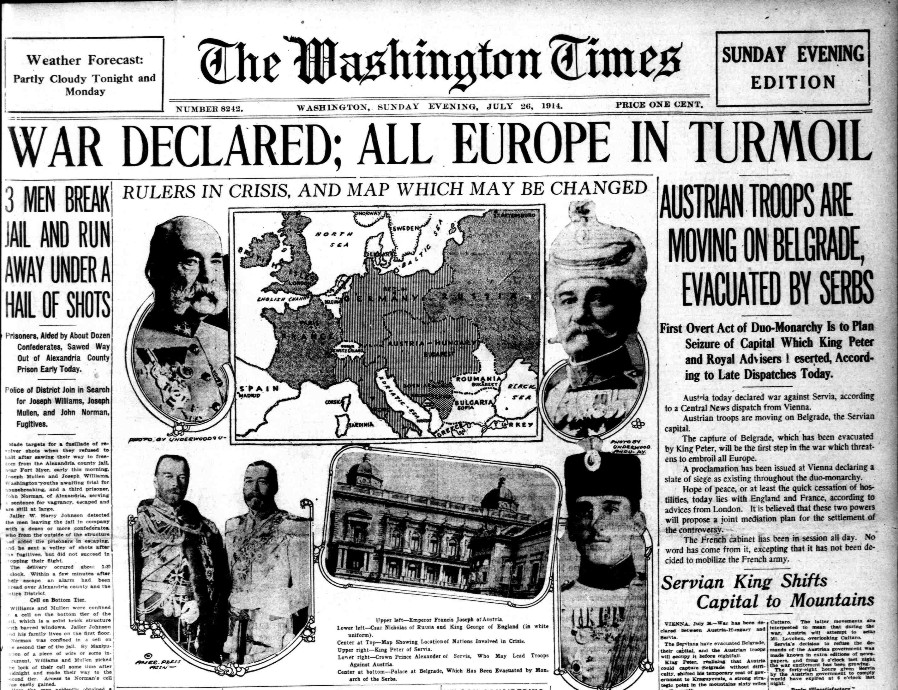|
Map of
Europe - World War I
World War I set most of the nations of Europe against each other in 1914. It spread to include many other nations around the world, including the United States. The war ended in 1918. The map below shows how Europe was divided into three groups during the war: the Central Powers, the Allied Powers, and neutral nations. A neutral nation is one that declares it will not take sides in a war. America sided with the Allied Powers in 1917. |
|
World War I: Who's Who  |
 |
Four background causes of World War I
|
1.
Militarism was spreading in Europe
Definition: Militarism is a belief in building up the nation's military forces as the best way to increase the nation's power and prestige in the world. Even before the war began in 1914, many countries in Europe had been expanding their armies and navies. Many leaders pushed for the steady build-up of their country's armed forces as a show of power. Most believed the best way to avoid trouble was to show enough military strength to discourage any attack. Germany showed off its growing military strength in the early 1900s by building large new modern battleships like the Kaiser, shown here in an old photograph. |

|
The
problem: Militarism is risky
The danger of militarism, of course, is that leaders with large armies are probably going to be tempted to use them sooner or later. |
|
2.
Alliances had spread widely in Europe
Definition: An alliance is an agreement between two or more nations, usually in a written treaty, to come to the each other's aid if one of the countries is attacked. In the years before World War I, many of the big countries of Europe had formed alliances with each other for protection. They hoped this would keep peace, because being in an alliance would make any other country think twice before attacking. The chart below shows the two main groups of alliances among European nations around the time World War I began. |

|
The
problem: Alliances can be risky
Alliances are normally intended to help keep peace. Once a war starts, however, it may spread widely because the alliances bring more countries into the fight. That is exactly what happened in Europe in 1914. When a small war started between just two countries, it spread rapidly to include many other countries that had alliances with those two countries. |
|
3.
Imperialism was tempting many leaders
Definition: Imperialism is when a stronger country controls a weaker country or territory mainly for the stronger country's benefit. A country that controls a number of other lands outside its borders is said to have an empire. During the late 1800s and early 1900s, some of the countries of Europe were gaining control over new territories. Overseas lands could provide raw materials needed for growing industry, and also markets in which to sell manufactured products. The map shows the lands that were part of the British Empire at that time. The red line shows the telegraph cables that connected the British empire. Germany was especially jealous of the the British Empire because of the huge advantage it gave the British in world trade. |
|
The
problem: Imperialism
creates tension
The competition by European countries over territories and trade around the world created serious tension and rivalry in Europe in the early 1900s. |
|
4. Nationalism was growing in Europe Definition: Nationalism is an intense feeling that goes beyond just patriotism to a sense that one's own nation must win a greater place in the world. The event that triggered the start World War I was the assassination of a leader of Austria-Hungary in June, 1914. The leader was Archduke Franz Ferdinand, next in line to be king. He was shot by a young man who was part of a secret group from the nearby country of Serbia. They desperately wanted Serbia to become a larger, greater nation. They thought killing the Archduke would somehow help that happen. |
|
The
fighting begins - July, 1914
As this newspaper reported, Austria-Hungary declared war on Serbia in July, 1914. It marched its troops toward the Serbian capital, Belgrade. All of Europe was tense and watching to see if the war would spread, or if there was still a chance for peace. |

|
The war
spread quickly and widely
Once the fighting started, the results were sadly predictable. A spirit of nationalism in many countries easily grew into a sprit of war. The pattern of alliances in Europe led one country after another to join the fight. Huge military forces were already built up and ready to be put into action. The map below shows the countries that became the Central Powers (red) or the Allied Powers (green). By the time the war ended four years later, the death toll was estimated at 17 million people. |
The photos and newspaper images are from the Library of Congress.
The maps of Europe are by David Burns.
The map of the British Empire is courtesy of Wikipedia.
Some images have been edited or resized for this page.
|
Copyright Notice
Copyright 2011, 2016 by David Burns. All rights reserved. As a guide to the Virginia Standards of Learning, some pages necessarily include phrases or sentences from that document, which is available online from the Virginia Department of Education. The author's copyright extends to the original text and graphics, unique design and layout, and related material. |